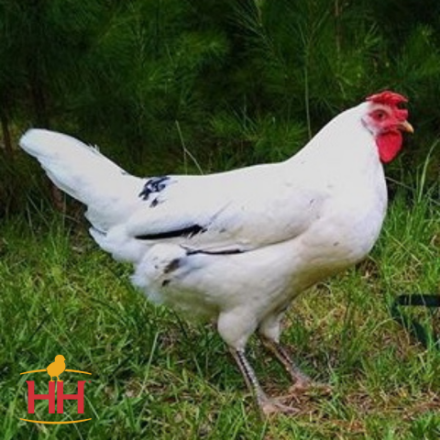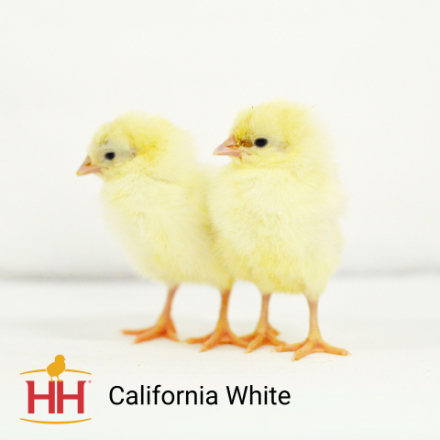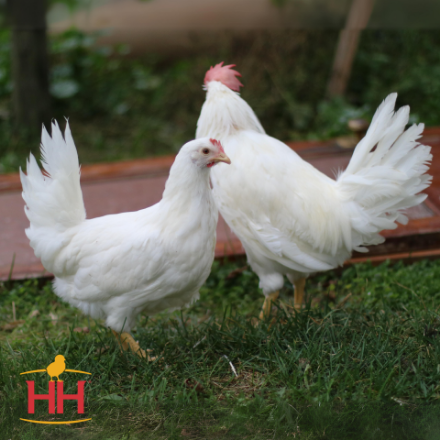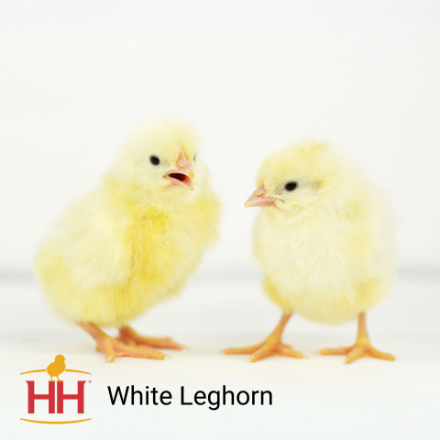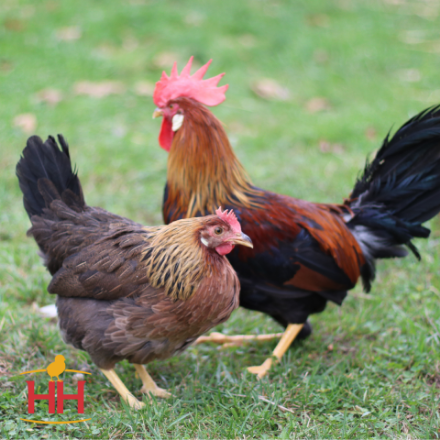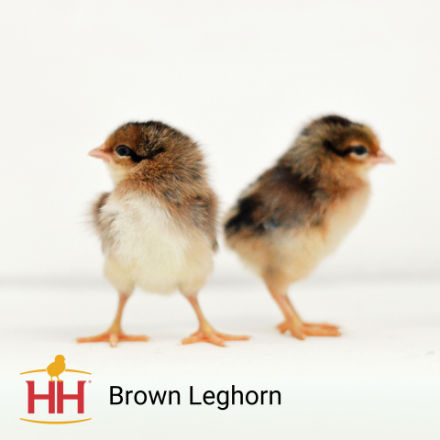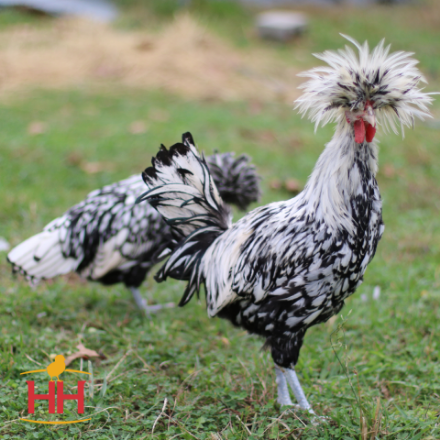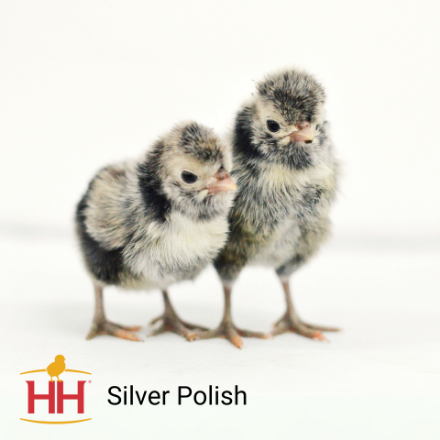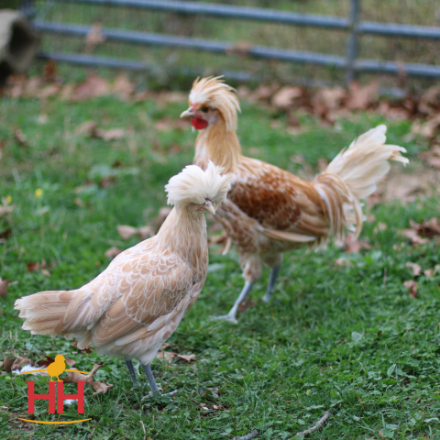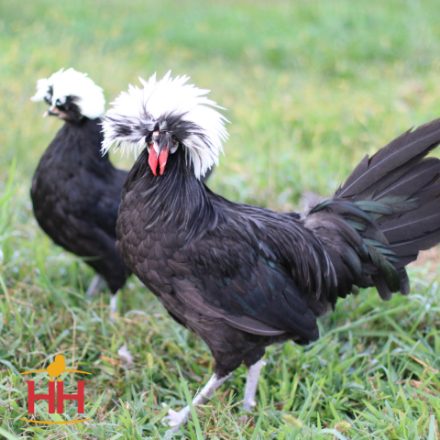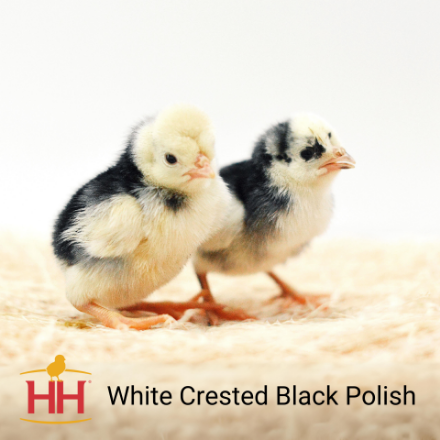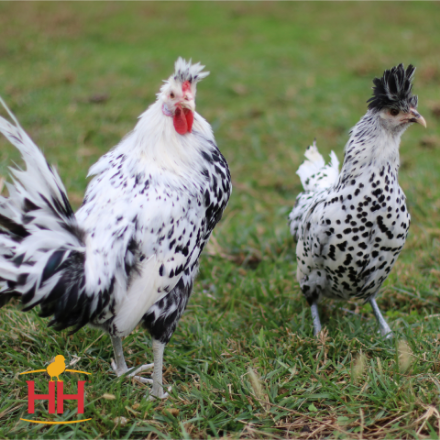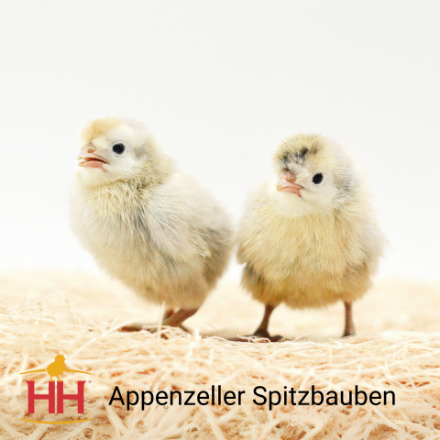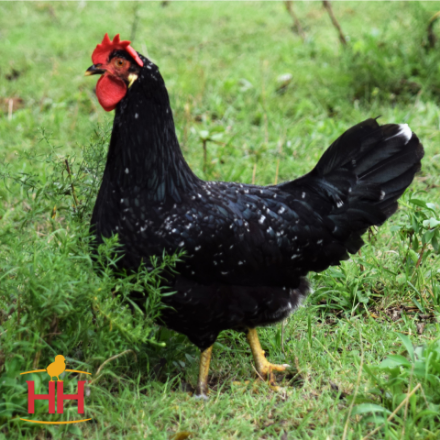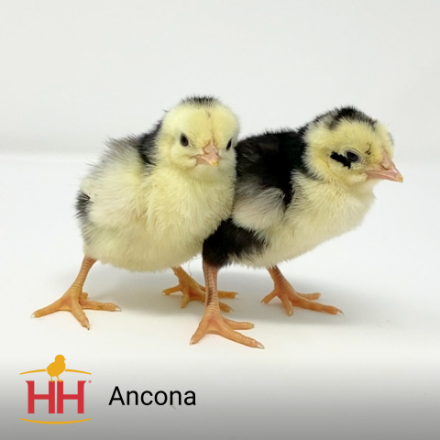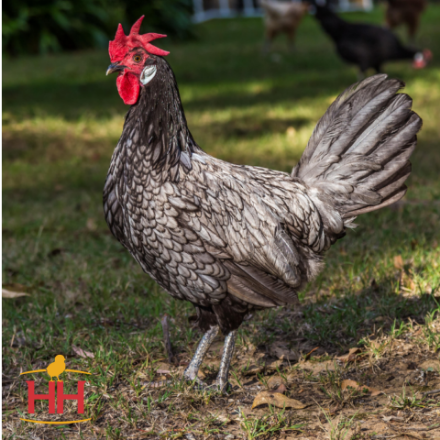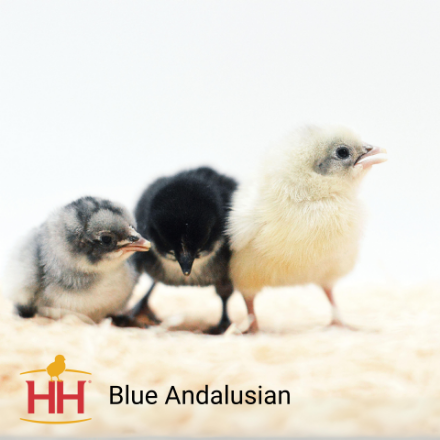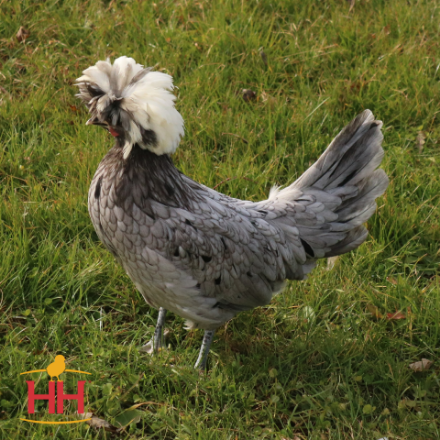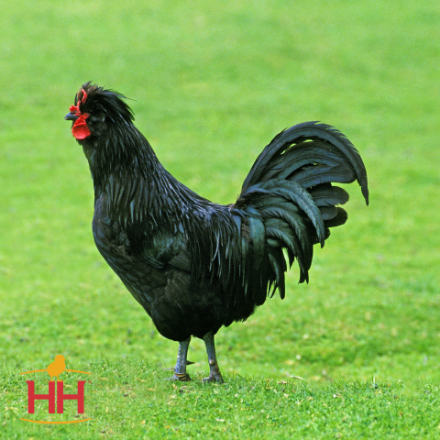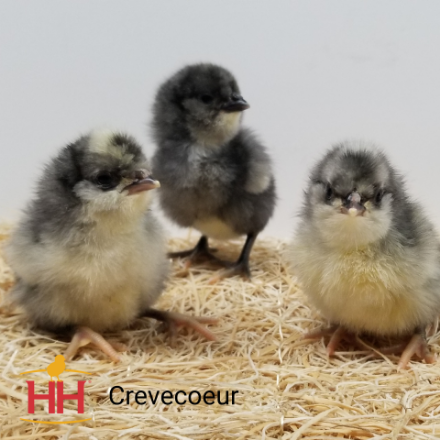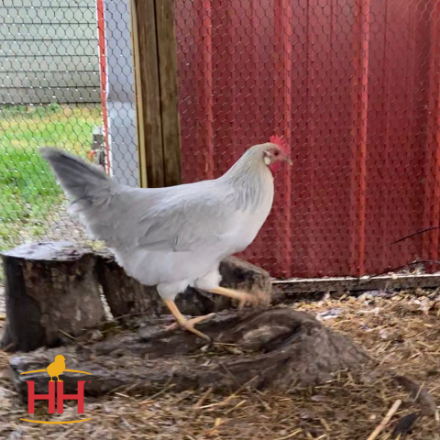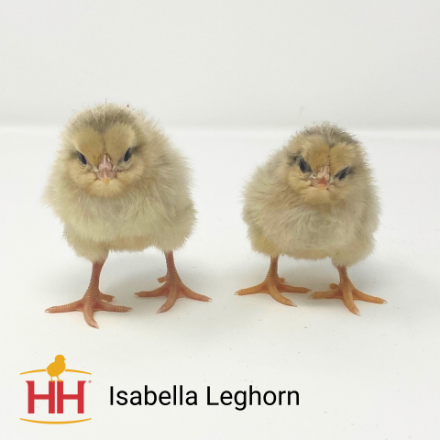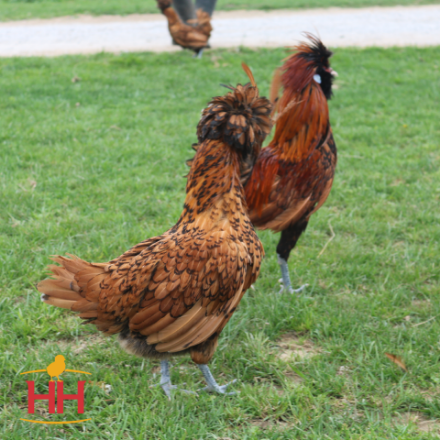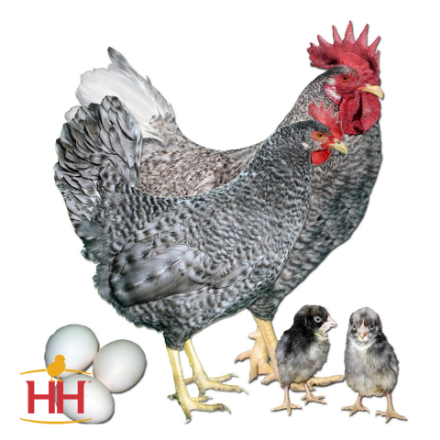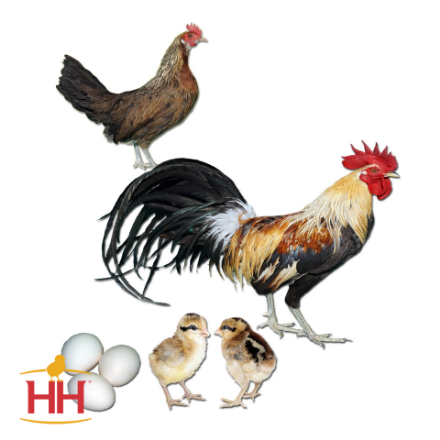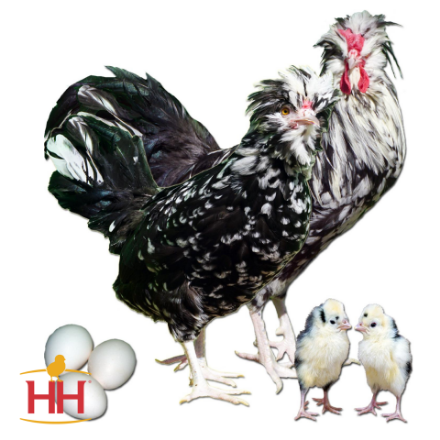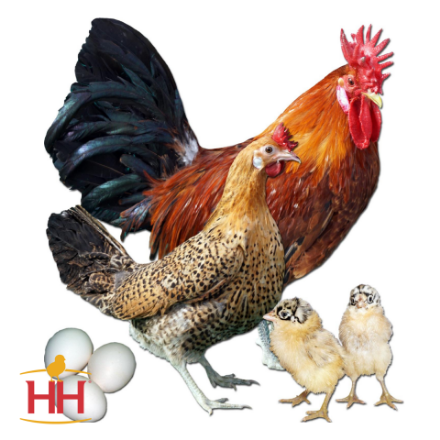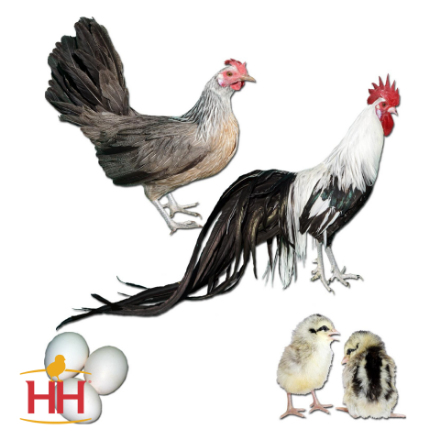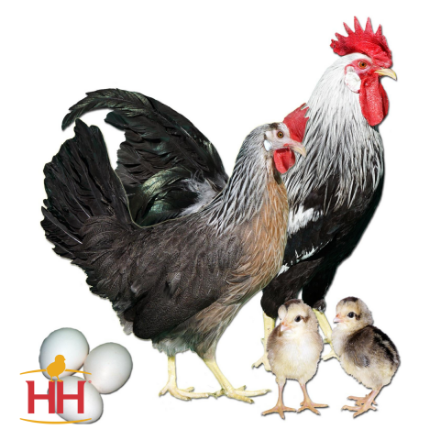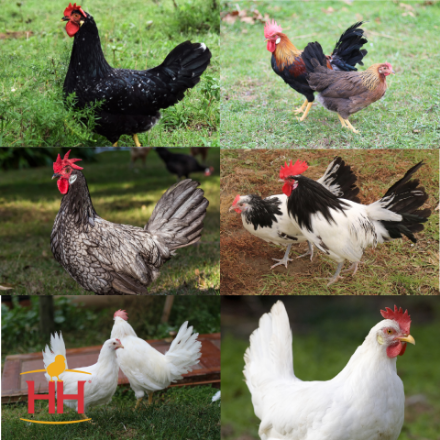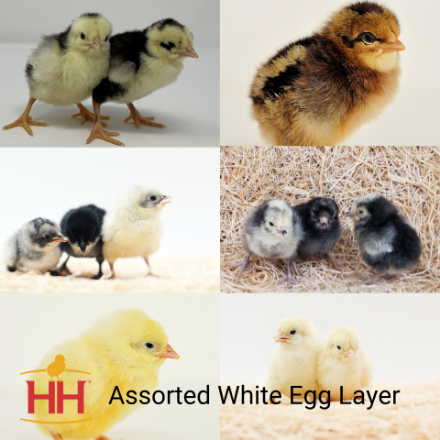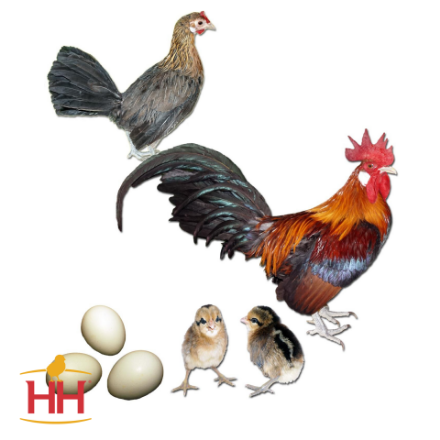White Egg Layer
Our minimum shipping quantity for chicks is 15. There is a minimum of 5 per sex and breed. We reserve the right to change order minimums as needed.
California White hybrids look almost exactly like the White Leghorns they were developed from but are slightly larger and have a few black spots on their white feathers. California Whites are quiet, calm and one of the best white egg layers for backyard flocks. Adding a few California Whites to a flock of brown egg layers adds color diversity to the egg carton. Purpose: Egg Layer Production: 300 Large White Eggs/Year Temperament: Active, Vocal, Alert Mature Weight: 4-5 lbs. Hardiness: Cold and Heat Hardy Broodiness: Rarely Comb Type: Single Comb
Currently Unavailable
Years ago, a small amazingly productive chicken breed was imported from Italy through the port of Livorno. "Leghorn" became the Anglicized word for that port and the breed. Supermarket eggs are almost always laid by White Leghorns or hybrids developed from them. Hens lay about 325 eggs every year while eating less feed than most other breeds. Purpose: Egg Layer Production: 325 Large White Eggs/Year Temperament: Active, Alert, Athletic, Nervous Mature Weight: 4-5 lbs. Hardiness: Cold and Heat Hardy Broodiness: Rarely Comb Type: Single Comb
Starting at: $3.69
Brown Leghorns share the productive traits and nervous personality of their white cousins but have slightly larger bodies clothed in one of the most beautiful feather patterns of any white egg laying breed. Always alert, Brown Leghorns are athletic, excitable, noisy, and often better able to avoid predators than slower breeds. Purpose: Egg Layer Production: 300 Large White Eggs/Year Temperament: Alert, Athletic, Vocal Mature Weight: 4-5 lbs. Hardiness: Cold and Heat Hardy Broodiness: Rarely Comb Type: Single Comb
Starting at: $3.91
The breed is named for the Polish army's feathered caps because it resembled their feathered crests. The chickens originated in Spain and then brought to Holland, where the Dutch perfected their coloring. They became a popular bird in France, then started appearing in the U.S. around the 1830s. They are a great breed, very docile. and even-tempered. They are easily surprised due to their feathers limiting their eyesight, making them vulnerable to predators. Purpose: Ornamental Production: 100 Small White Eggs/Year Temperament: Gentle, Active Mature Weight: 4-5 lbs. Hardiness: Heat Hardy But Not Cold Hardy Broodiness: Rarely Comb Type: V Comb
Currently Unavailable
The Polish breed is named for the Polish army's feathered caps because they resembled their feathered crests. The chickens originated in Spain and then brought to Holland, where the Dutch perfected their coloring. They became a popular bird in France, then started appearing in the U.S. around the 1830s. They are a great breed, very docile, and even tempered. They are easily surprised due to their feathers limiting their eyesight, making them vulnerable to predators. Purpose: Ornamental Production: 100 Small White Eggs/Year Temperament: Gentle, Active Mature Weight: 4-5 lbs. Hardiness: Heat Hardy But Not Cold Hardy Broodiness: Rarely Comb Type: V comb
Currently Unavailable
The White Crested was a very popular breed in the late 1600's and was featured in many paintings by various artists. They are a wonderful, dual-purpose bird that also makes a great show bird. The breed tends to be nervous but lays a decent number of eggs. Purpose: Ornamental Production: 100 Small White Eggs/Year Temperament: Gentle, Active Mature Weight: 4-5 lbs. Hardiness: Heat Hardy But Not Cold Hardy Broodiness: Rarely Comb Type: V Comb
Starting at: $3.63
The Appenzeller Spitzhauben originated in Switzerland. They are black and white speckled with a V-shaped comb. These birds are excellent climbers and love to roost in trees. They do not do well in smaller coops and are free-range birds. The hens will lay medium white eggs. Interestingly, Spitzhauben is German for pointed hoods. Purpose: Ornamental Production: 155 Medium White Eggs/Year Temperament: Active, Alert Mature Weight: 4-5 lbs. Hardiness: Cold and Heat Hardy Broodiness: Rarely Comb Type: V Comb
Starting at: $3.63
The Ancona is an old Italian breed that is known for its ability to lay lots of white-shelled eggs. They are a lightweight breed that can have either a single or rose comb. The males develop long flowing tail feathers that make them especially eye-catching. The plumage is black with white-tipped feathers, this is known as mottling. With each molt, birds tend to get whiter. They are active birds, are great foragers, and thanks to their smaller size they eat less than larger breeds. Purpose: Egg Layer Production: 240 Medium White Eggs/Year Temperament: Social, Active, Vocal Mature Weight: 4-6 lbs. Hardiness: Cold and Heat Hardy Broodiness: Occasionally Comb Type: Single Comb
Starting at: $5.36
The Lakenvelder is an old German breed that is famous for its unique color pattern. The neck, saddle, and tail feathers of the Lakenvelder are black, while the wings, back, and breast are white. The pattern gives them a belted look similar to Dutch Belted cattle and Hampshire hogs. The sharp contrast of black and white feathers makes them an interesting bird to have and admire. In addition to their unique color, they are also very good egg layers. They are a lightweight active breed that is well adapted to free-ranging. The Lakenvelder is a unique and rare breed that would add interest to any flock, all while producing lots of eggs for the table. Purpose: Egg Layer Production: 240 Medium White Eggs/Year Temperament: Active, Energetic Mature Weight: 4-5 lbs. Hardiness: Heat Hardy But Not Cold Hardy Broodiness: Rarely Comb Type: Single Comb
Starting at: $4.37
The original ancestors of the Andalusian came from Spain, but British poultry fanciers are believed to be the ones to perfect the breed. The Andalusian is most well-known for its striking blue plumage, with ground color being slate blue and each feather being laced with darker blue. Their large red combs, wattles, and white earlobes make a beautiful bird. They have an active disposition and are known to be excellent foragers. The males will develop a large, full tail at maturity along with long flowing saddle and hackle feathers. Like all Mediterranean breeds, they can handle hot temperatures well. This breed hatches black, blue, and splash coloring; there is no guarantee what color you will receive. Purpose: Egg Layer Production: 265 Medium White Eggs/Year Temperament: Active, Energetic, Vocal Mature Weight: 4-6 lbs. Hardiness: Cold and Heat Hardy Broodiness: Rarely Comb Type: Single Comb
Starting at: $5.36
Contrary to belief, this breed did not orginate in Poland. They were named after the Polish army’s feathered caps because it closely resembled their feathered crests. The chickens originated in Spain but were then brought to Holland, and eventually the Dutch perfected their coloring. They became a popular bird in France, then started appearing in the U.S. around the 1830s and 40s. They are a great breed and are docile and even-tempered. They are easily surprised and sometimes nervous due to their feathers limiting their eyesight. This makes them more vulnerable to predators. Blue coloring can result in black, blue, or splash feathering, blue is not a guaranteed color. Purpose: Ornamental Production: 100 Small White Eggs/Year Temperament: Gentle, Active Mature Weight: 4-5 lbs. Hardiness: Heat Hardy But Not Cold Hardy Broodiness: Rarely Comb Type: V Comb
Currently Unavailable
The Crevecoeur is an old French breed that was once highly prized for the quality of its meat. Today it is considered a dual-purpose bird laying a fair number of white eggs while producing a moderate amount of meat. The breed was first introduced to the United States in late 1860’s but has always been a rarity. Crevecoeurs have a large globular crest on the top of their head and a small V-shaped comb that is mostly hidden by crest feathers. They are also bearded with small, virtually non-existent wattles. At first glance they seem similar to the Polish breed. However, Crevecoeurs are heavier and with blockier bodies than Polish. Purpose: Dual- Purpose Production: 200 Large White Eggs/Year Temperament: Docile, Calm, Active Mature Weight: 6-8 Lbs. Hardiness: Cold and Heat Hardy Broodiness: Occassionally Comb Type: V-Comb
Starting at: $5.35
Leghorns are an ancient breed that first originated in Italy and have always been famous for their egg production capabilities. The first Leghorns came to the U.S. starting in the 1820s with frequent importations through the 1850s. From here, the breed was further refined and improved into the breed as we know it today. To this day, they are still recognized as a top egg-producing breed that is highly efficient at converting feed into eggs. They are an active, graceful breed that does well in free-range situations. Isabella Leghorns are a newer variety of Leghorn that feature pastel shades of cream and blue. Hens are an even pastel blue shade with cream-colored hackles and breasts. The hackle and saddle of the males are a cream color with blue striping on each feather while the tail and breast are an even shade of pastel blue. Purpose: Egg Layer Production: 300 Large White Eggs/Year Temperament: Active, Flighty Mature Weight: 4-5 lbs. Hardiness: Cold and Heat Hardy Broodiness: Rarely Comb Type: Single Comb
Currently Unavailable
The Polish breed was named for the Polish army's feathered caps because it resembled their feathered crests. They originated in Spain and were brought to Holland where the Dutch perfected their coloring. They became popular in France, then started appearing in the U.S. around the 1830s. A great breed, very docile and even tempered. They are easily surprised due to their feathers limiting their eyesight, making them vulnerable to predators. Purpose: Ornamental Production: 100 Small White Eggs/Year Temperament: Gentle, Active Mature Weight: 4-5 lbs. Hardiness: Heat Hardy But Not Cold Hardy Broodiness: Rarely Comb Type: V Comb
Currently Unavailable
A Privett Hatchery exclusive, the Blue-Breasted Brown Leghorn is a mix of our Blue and Brown leghorn chicks. The females will be mostly blue, with a red tinge in their breast and neck feathers, while the males are a gorgeous red-brown through the shoulders with a blue breast.
Currently Unavailable
An exhibition favorite, the White Faced Black Spanish chicken has glassy black feathers and over-developed white, low hanging ear lobes. They have a single comb and four toes, and lay white eggs.
Currently Unavailable
California Greys were developed in the state of California from White Leghorns and Barred Plymouth Rocks. This cross yielded a bird with favorable characteristics, including small body size and excellent white egg production from the White Leghorn, and the barred plumage from the Barred Plymouth Rock. California Greys are active, alert, and good foragers that double as an excellent egg producing bird.
Starting at: $4.37
The Phoenix chicken is a bird that was developed in Germany from Japanese long-tailed birds. Phoenix are tolerant of heat and are primarily used for exhibition and ornamental purposes. Under proper care and the right conditions, Phoenix males can display impressive long tails.
Currently Unavailable
Mottled Houdans are a distinctive crested variety that have five toes on each foot. They have a mottled, or spotted appearance. They are compact and have low body carriage compared to polish. Hens may be expected to weigh about 6 pounds when mature and will economically produce medium white eggs.
Starting at: $5.35
Sicilian Buttercups are active foragers and alert chickens that are good for warmer climates. They are good layers of white eggs. They sport a unique gold and black barred plumage in females which reflects as a red color in males.
Starting at: $5.10
The Silver Phoenix is a gorgeous ornamental and exhibition variety of bird. Like the Golden Phoenix, the Silver Phoenix was developed in Germany from Japanese long tailed birds. Males can grow an exceptionally long tail under the right conditions and with great individual care. Males have a silvery white head and back with a greenish black colored breast. Females are silvery gray with a salmon-colored breast. Available as straight run only.
Currently Unavailable
Silver Leghorns have a distinctive appearance, as males have black bodies with green tint, highlighted by a solid silver-white head. Females have silver-gray necks, backs and wings with salmon shading on the breast. Silver Leghorns are excellent layers of white eggs and are very active and alert foragers.
Starting at: $4.12
The Assorted White Egg Layer assortment is based on availability and will not include meat birds of any kind, or brown egg layers. The breeds may be a mixture of the following: Ancona, Brown Leghorn, Andalusian, California White, White Leghorn, Silver Lakenvelder. Purpose: White Egg Layer Production: 240-325 Medium to Large White Eggs/Year Temperament: Social, Active, Alert, Vocal Mature Weight: 4-6 lbs. Hardiness: Cold and Heat Hardy Broodiness: Rarely Comb Type: Single Comb
Starting at: $3.49
The Indian Red Junglefowl are small active chickens that are extremely resistant to predation and are excellent foragers. Male Red Junglefowl are black breasted and tailed with golden-red heads and backs. Female Red Junglefowl are small birds with muted golden colored necks and breasts, with lighter brown coloration in the rest of the body. Available as straight run only.
Currently Unavailable

